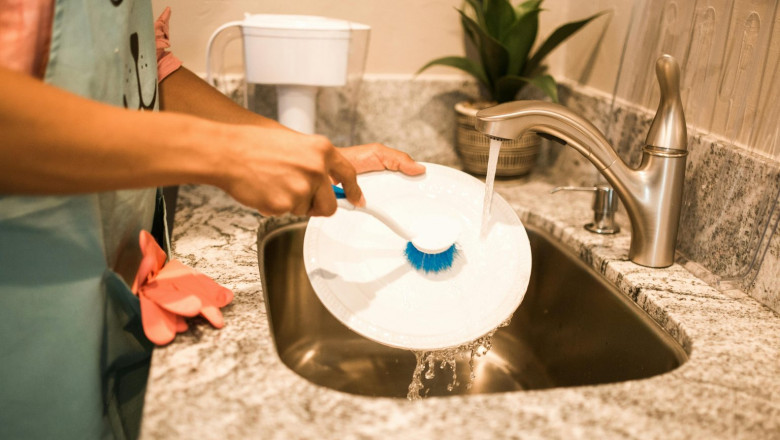views
Why Your Plumbing Fixtures Keep Getting Stained
Plumbing fixtures—sinks, faucets, showerheads, tubs—should sparkle and remain clean. But too often, you notice dull discoloration, rings around drains, or rust-like streaks. What causes these stubborn stains? And how can you address them permanently? One of the most common culprits is water chemistry. Let’s explore the reasons behind stained plumbing fixtures, how to identify the cause, and what you can do to protect your home from further damage.
The Hidden Villain: Hard Water
Hard water refers to water that contains a high concentration of minerals, mainly calcium and magnesium. When this mineral-heavy water dries on surfaces, it leaves behind chalky white deposits known as limescale. These deposits accumulate around faucets, showerheads, and sinks, causing:
-
White, crusty buildup
-
Dull, cloudy spots on glass or chrome
-
Rust-colored rings or streaks if iron is also present
If your soap doesn’t lather easily or your shampoo leaves your hair feeling rough, it might be time to investigate your water quality. If you’re unsure how to know if I have hard water, there are simple at-home tests and clear signs to guide you.
Iron, Manganese, and Stubborn Stains
In addition to calcium and magnesium, trace metals like iron and manganese can contribute to fixture discoloration. Iron leaves reddish-brown stains, while manganese causes dark gray or black smears. These are especially common in homes that use well water.
Such stains are harder to remove and often return quickly, especially when the source isn’t treated. That’s why understanding the signs of mineral-heavy water is so important. If you’re wondering how to detect hard water, look for visible residue on fixtures, poor soap performance, or scaling inside appliances like kettles and dishwashers.
Mold, Mildew, and Organic Build-Up
Sometimes, the stains you see on plumbing fixtures aren't mineral-based. If there’s black, green, or pink discoloration around drains or in the corners of your shower, it may be mold or mildew. This is usually caused by lingering moisture and lack of ventilation rather than water quality.
However, mineral buildup can create rough surfaces where mold and mildew cling more easily, turning a small problem into a recurring one. That’s why resolving water quality issues is a foundational step in preventing both mineral and organic staining.
What’s Flowing Through Your Pipes?
Not all water is created equal. Across different regions and even within the same neighborhood, water quality can vary based on its source, treatment methods, and pipe material. Some households have naturally soft water, while others suffer from extremely high mineral levels.
If you’re asking yourself, “do I have hard or soft water?” there are a few ways to find out. Soft water usually lathers easily with soap and leaves skin feeling smooth. In contrast, hard water often causes soap scum, water spots, and dry skin. A professional water test or an inexpensive DIY kit can confirm what you’re dealing with.
Fixing and Preventing Fixture Stains
Once you’ve identified the cause of your staining, the next step is cleanup and prevention:
Cleaning Methods
-
White vinegar: Effective for dissolving calcium deposits. Soak a cloth in vinegar and wrap it around faucets or fixtures for an hour before scrubbing.
-
Lemon juice: Natural and safe for removing mineral stains, especially on delicate surfaces.
-
Baking soda paste: Combine with water to gently scrub stubborn spots without scratching.
-
Rust removers: Choose commercial products for severe iron stains—but use with caution on metal finishes.
Prevention Tips
-
Install a water softener: This is the most reliable long-term solution for hard water. It replaces calcium and magnesium ions with sodium or potassium.
-
Use point-of-use filters: Attach them to faucets or showers to block specific minerals.
-
Clean regularly: Don’t let deposits build up. Weekly cleaning can prevent stains from becoming permanent.
When to Call in the Experts
If you’ve tried everything and stains keep coming back, your water chemistry might be more complex than you think. Excessive iron, low pH, or microbial contamination can require specialized treatment systems. Professional plumbers can test your water and recommend customized solutions, such as filtration systems or neutralizers, to keep your plumbing fixtures in top shape.
Conclusion
Stained plumbing fixtures aren’t just an eyesore—they’re often a sign of underlying water quality issues. Whether you’re seeing white scale, rust streaks, or mysterious dark marks, the root cause is often hidden in your water supply. Learning how to know if I have hard water, understanding how to detect hard water, and figuring out do I have hard or soft water can give you the knowledge you need to take action.
With the right information and a few preventive steps, you can restore your fixtures’ shine—and keep them that way.





















Comments
0 comment